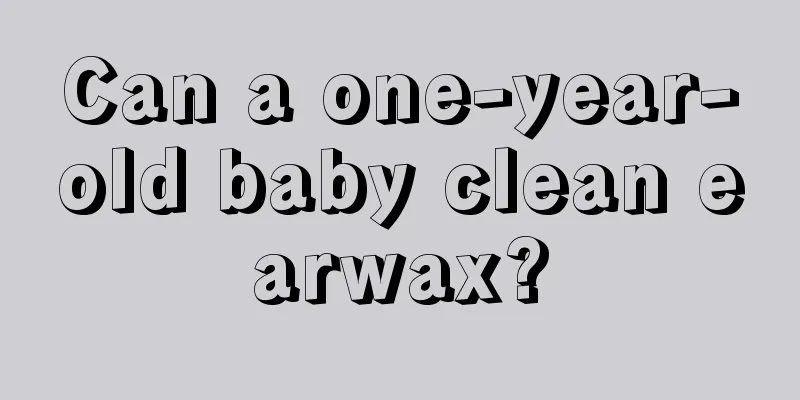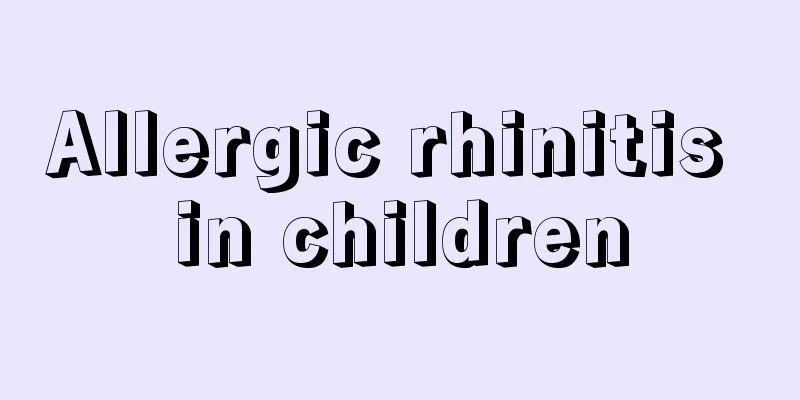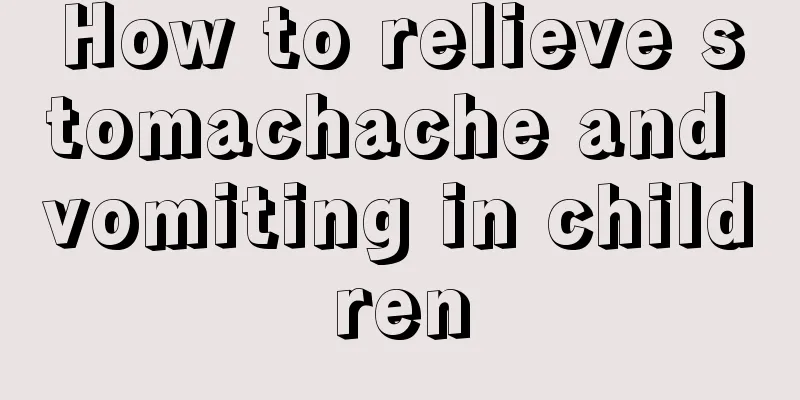Can a one-year-old baby clean earwax?

|
Many young mothers are very careful when taking care of their babies. They also learn some knowledge about taking care of babies through books. Some experts say that it is best not to clean the baby's earwax, because the baby's ear canal is relatively small and it may cause damage to the baby's ears. So can a one-year-old baby have earwax cleaned? Below I will tell you specifically what age of baby is suitable for earwax cleaning. 1. At what age can babies clean their ears? It is only appropriate to clean the baby's ears after he is three years old. Specific analysis: 1. Generally speaking, as long as the child's ears do not hurt or itch and his hearing is good, earwax does not need to be removed artificially. And earwax has certain functions. On the one hand, it is used to protect the eardrum. 2. In fact, the eardrum is very thin, not to mention the baby's eardrum. The earwax covering it becomes a natural "protective film" that can help block strong sound impact. 3. In addition, the baby's earwax and fine hair can absorb microorganisms and dust that enter the ear canal from the air, thus preventing bacterial infection of the eardrum. suggestion: 1. If earwax is secreted too much and condenses into hard lumps, it will cause obstruction of the external auditory canal. At this time, once water enters the ear, the earwax plug will naturally expand, irritate the skin of the ear canal, and easily cause external ear canal inflammation. In this case, the baby's earwax should be thoroughly cleaned. 2. However, because the baby's ear canal is narrow and the skin is delicate, if you use the adult cleaning method, it is easy to cause damage to the baby's ear canal and eardrum. 3. At the same time, most babies do not accept others making excessive movements on their ears. They will twist their heads around, or simply refuse to cooperate or even cry, which may cause mothers to accidentally injure their baby's eardrums. 4. Therefore, it is best to take your baby to the hospital and ask an ENT doctor for help. Do not force your baby to remove earwax at home. 2. At how many months can babies clean their ears: Cleaning baby's earwax frequently is harmful. The baby's external auditory canal is far from mature, and the external auditory canal is mostly flat and slit-shaped, which is not easy to operate, and the skin inside the ear is very delicate. Frequent earwax removal can easily lead to some adverse consequences: 1. In mild cases, it may injure the skin inside the ear and cause inflammation, boils and sores. In severe cases, it may rupture the eardrum and cause hearing damage to the baby. 2. Clinicians have also found that frequent earwax removal can cause the skin of the external auditory canal to be frequently irritated and form external auditory canal papilloma. 3. Although it is benign and can be removed surgically, it is prone to recurrence after removal. After multiple recurrences, it may turn into cancer, posing a threat to life. Warm reminder: Generally speaking, earwax will fall off by itself and be discharged from the ear canal with the help of the movement of joints such as the jaw as the baby chews, opens his mouth or yawns, so you don’t need to worry. |
<<: Why does the baby sweat and smell?
>>: How old can children clean their ears? How many months can babies clean their ears?
Recommend
What to do if a child has rubella? Experts introduce effective treatments!
Very young infants and young children have very p...
What to do if children have anorexia
Anorexia in children is a symptom with a relative...
Why do children like to bite people?
Mothers really like to communicate about their ch...
What should I do if my child has a low fever?
Many children are particularly tired because of f...
How to treat hernia in children?
Many parents may feel unfamiliar with the term &q...
What should I do if my baby keeps coughing?
When you encounter a baby coughing, you still nee...
Why does the baby retch after feeding?
A baby is the apple of a family's eye and is ...
Sharing of baby's development indicators at the age of two
Babies are the fruit of every family's love a...
Can children take cold medicine and anti-inflammatory medicine together?
Children's bodies are relatively fragile, and...
What to do if a child has enlarged nasal conchae
There is probably only one child in every family ...
What to do if your 2-year-old baby's penis is red and swollen
The baby's body is not fully developed yet, a...
Symptoms of social impairment in babies
While children are growing physically, parents sh...
Yellow runny nose after cold in children
The probability of colds occurring in our lives i...
What is the cause of the 9-year-old child's knee pain?
Knee pain is a common disease that many people ha...
Children's nutritious juice combination
During the entire process of a child's growth...









